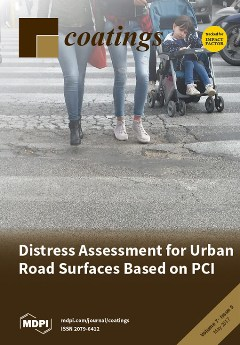Road roughness evaluation can be carried out using different approaches. Among these, the assessment of ride quality level perceived by road users is one of the most-used. In this sense, different evaluation methods have been developed in order to link the level of
[...] Read more.
Road roughness evaluation can be carried out using different approaches. Among these, the assessment of ride quality level perceived by road users is one of the most-used. In this sense, different evaluation methods have been developed in order to link the level of irregularities present on road surface profiles with the induced detrimental effects in terms of discomfort. In particular, relationships between wavelength content of road profiles and consequent level of comfort perceived had been investigated by using, in general, a mean panel ratings approach. In this paper, four ride quality evaluation methods (Ride Number, Michigan Ride Quality Index (
RQI), Minnesota Ride Quality Index and frequency-weighted vertical acceleration,
awz, according to ISO 2631 were applied to a set of real road profiles. The obtained results were analyzed, investigating a possible relation between the different indices, comparing them also with the most-used road roughness method worldwide: the International Roughness Index (
IRI). The analyses carried out in this work have highlighted how the various rating scales may lead to a different ride quality assessment of the same road pavements. Furthermore, comparing the
awz with the values obtained for the other three methods, it was found that their rating scales are set for speeds within the range 80–100 km/h. For this reason, it is necessary to identify new thresholds to be applied for lower speeds, as in the case of urban roads. In this sense, the use of the ISO 2631 approach would seem to be a useful tool.
Full article





